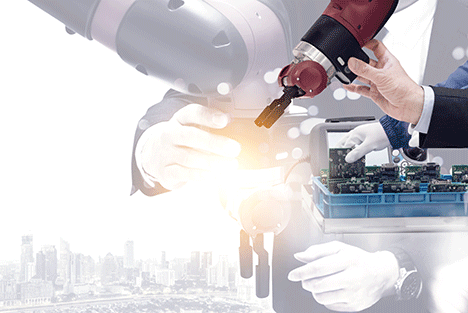
Although cobots have not historically been as popular as industrial robots, a number of factors have been identified in recent years to accelerate the adoption of cobots, including Industry 5.0, smart factory offerings from major automakers, and growing manufacturing demand for remelting.
Collaborative robots, commonly referred to as cobots, have grown in popularity over the past decade. Cobots are robots that work side by side with human operators without physical barriers or cages. With this feature, operators can access coworking spaces without shutting down the entire production line, minimizing downtime costs.
Although historically cobots have not been as popular as industrial robots, several factors have been identified in recent years for the accelerated adoption of cobots, including Industry 5.0, smart factory offerings from major automakers, and a growing demand for production return. As one of the pioneers in introducing automation into manufacturing, the automotive industry is by far the largest market for robots; Ensure the safety of the operator during the inspection. This process can result in significant downtime costs. However, collaborative robots can be an ideal solution as human operators can work effectively and safely alongside other robots without affecting them. Audi has announced its “Smart Factory 2025,” one focus of which is improved human-machine interaction (HRI), and many other global automakers such as Volkswagen and Nissan have proposed similar plans. These plans are expected to boost sales of collaborative robots in the automotive industry. Industry 4.0 has been a hot topic for years. However, Industry 4.0's focus on digitalization has been shown to lead to many socio-economic issues, such as concerns about replacement of human operators and greenhouse gas emissions. The European Union (EU) recently unveiled its Horizon 2020 and Industry 5.0 plans, which focus on HRI and CO2 reduction. Since many robot manufacturers and end users are headquartered in Europe, IDTechEx believes this proposal will increase demand for collaborative robots.
In addition, many other countries have launched their plans such as "Made in China 2025", "Denmark Digital Growth Strategy" and "Roadmap: From Internet to Robotics" to promote the adoption of collaborative robots. Industry 5.0 focuses on three main areas: human-centered manufacturing, sustainability, and business sustainability. As mentioned in a recent EU publication, Industry 5.0 aims to bring human operators back into production and increase the sustainability of production. It is generally accepted that Industry 5.0 will require a wider deployment of cobots, but how exactly are they connected and what benefits will Industry 5.0 cobots bring? The image below, created by IDTechEx, gives us an explanation. Human-oriented production places high demands on production safety, as machines work in close contact with human operators. Torque sensors can be used for collision detection and force control. The human operator sets the value of the torque sensor. When a collision occurs, the value detected by the sensor exceeds the set range, triggering the emergency stop function. Torque sensors are the most widely used sensor system for collaborative robots due to their reliability and low cost. However, torque sensors can only detect changes in torque after a collision has occurred, meaning they cannot predict ahead of time. A proximity sensor might be the ideal solution. As the human operator approaches the cobot's arm, the capacitance of the air gap between the sensor and the human changes. However, proximity sensors are relatively expensive, and multiple proximity sensors are required for a cobot to be able to detect a human operator from different directions, ultimately resulting in high cost and reduced availability. Sustainability refers to reducing greenhouse gas emissions and mitigating the potential negative social impacts of Industry 4.0. For example, cobots operate at lower speeds and take up less space than industrial robots, resulting in lower CO2 emissions. At the same time, socio-economic fears that machines will replace humans will decrease as cobots work closely with human operators. Finally, in terms of sustainability, major global players have begun to diversify their suppliers due to the lingering effects of COVID, such as supply chain disruptions and inflation. These impacts create significant opportunities and challenges for local small and medium-sized enterprises (SMEs) to increase their automation and meet the capacity needs of larger corporations. Some SMEs have already started installing cobots on their production lines to improve their production capabilities. Thus, compared to Industry 4.0, there is no significant technological development in the field of automation or production in the transition to Industry 5.0. IDTechEx believes that Industry 5.0 will open up huge opportunities for collaborative robots. As a pioneer of Industry 5.0, the adoption of cobots in Europe is growing rapidly, and IDTechEx believes that other major regional economies will also drive the adoption of cobots. The new IDTechEx report "Collaborative Robots (Cobots) 2023-2043: Technologies, Players and Markets" provides a comprehensive analysis of important applications in end industries (automotive, food and beverage, electronics, healthcare and hospitality) and challenges (select and place palletizing, packaging, etc.). The report covers key technologies, market analysis, and detailed market forecasts for 20 years by region, end industry, and challenge. The report provides insight into market dynamics, competitive landscape, market outlook and promising applications.
Post time: Jun-21-2023

